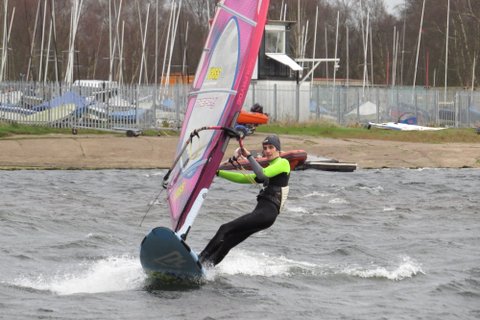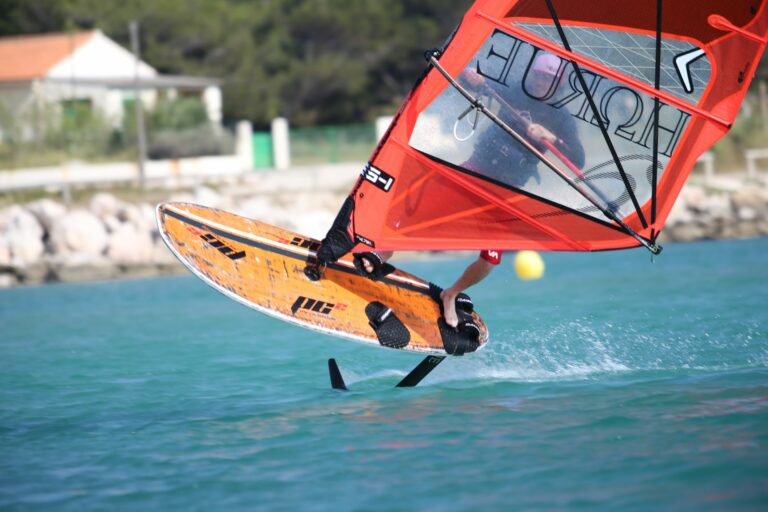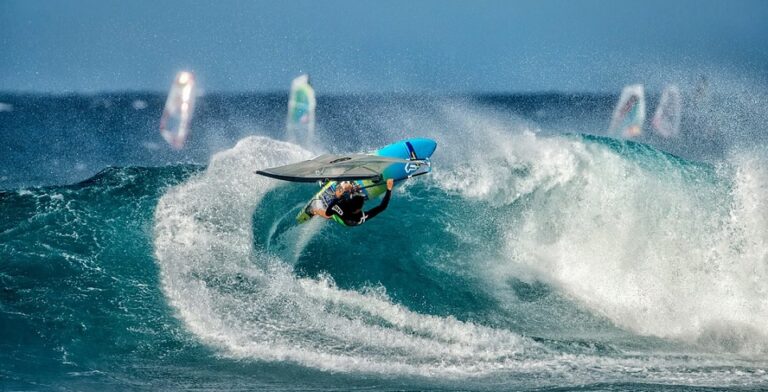Another monthly from the RYA and we kick off the New Year with some important equipment advice and choices. Make sure you are prepared and ready for action this year and be sure to read to the end where Sam Ross gives 5 top tips on what not to do.
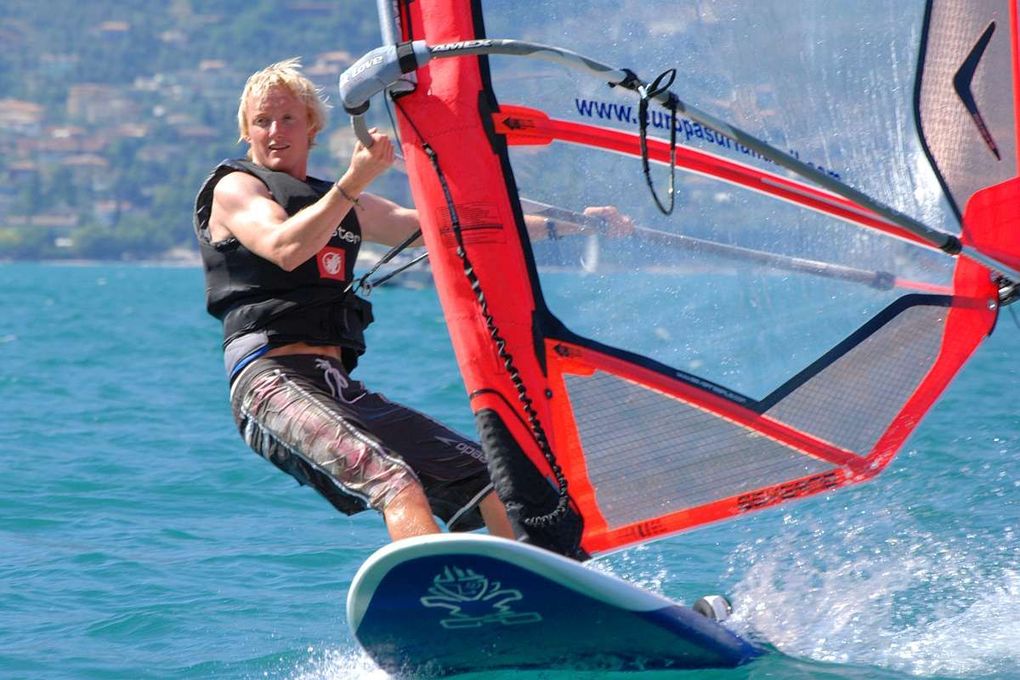
KIT TO GET YOU STARTED
A New Year equals New Year’s resolutions, and for many people new to windsurfing that can often mean committing to buying their own kit for the first time.
However, it’s a jungle out there! So how do you make sure you invest in the right kit to keep you progressing, and not get so frustrated with the sport you give it up?
“The whole subject around buying ‘starter kit’ is vast,” Amanda Van Santen, RYA Chief Instructor, Dinghy and Windsurfing, explains. “There are many elements to take into consideration depending on the sailor, the type of sailing they want to do and the type of conditions they will, to start with, most commonly be sailing in.
“But there is a lot of information and advice out there too, so the guidance is always don’t rush into anything, do your homework and ask the experts to make sure you get the right kit to keep you developing and enjoying the sport.”

Back to basics
If you’re even considering buying your first bit of kit, chances are you might have already had a few ‘taster’ sessions, or done the first course in the RYA’s National Windsurfing Scheme (adults) or Youth Windsurfing Scheme (U16s), depending on your age. This is the best way to get a handle on what starter kit you need.
“Always take lessons before buying equipment,” Amanda continues. “When you first learn a sport your progression is steep, so the kit you need initially, you aren’t likely to stay using for long. Invest too early and you may buy equipment too advanced for you, or equipment that you will only use for a very short period of time.”
The RYA Start Windsurfing (adults) or Stage 1 and 2 (youths) courses are typically run over two-days by many RYA Training Centres, at home and overseas. By the end of these a sailor will be up and sailing around, upwind and downwind, tacking and gybing. However buying kit at this stage could still be a bit premature.
Amanda says: “By continuing tuition, and taking a few more lessons and completing part, or all, of your Intermediate or Youth Stage 3 and 4 courses, your proficiency will improve quickly and you will be at a better stage to invest in equipment.”
So you’re at the point where you want to go shopping but where do you start?
There are two parts to consider here really – the board and rig, and your personal clothing. Understanding how your equipment works, and how to look after it, both on and off the water, is an important part of the process.
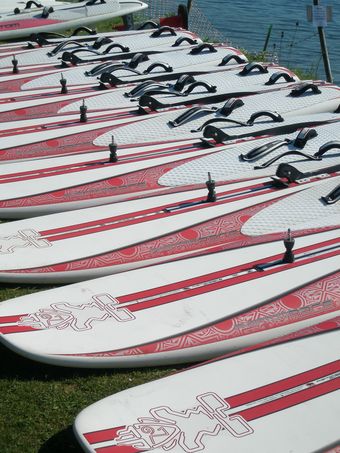 Board talk
Board talk
In terms of your sailing equipment, ‘kit’ is generally considered in terms of the board and rig (sail, boom, mast, mastfoot, uphaul etc), and it makes a big difference if you buy kit that suits the level you’re currently at, or is a little bit ahead, but still useable.
There are lots of styles, sizes and brands of boards out there, and which you go for can depend on three factors – your ability, your size and what type of sailing you’re most likely to be doing (wave, racing, bump and jump, blasting, freestyle etc).
For starter kit, your two primary considerations when buying a board are its buoyancy – or ‘volume’ as it’s known – and width.
Volume is measured in litres, with one litre supporting one kilogram of weight. The basic calculation to work out what volume you require can be broken down as:
Your weight in kilos +
Rig weight when wet +
Board weight wet with mast base, straps and fin
Total converted from kilos to litres
Add or subtract the volume adjustments of sailor ability, intended use and predominant wind conditions.
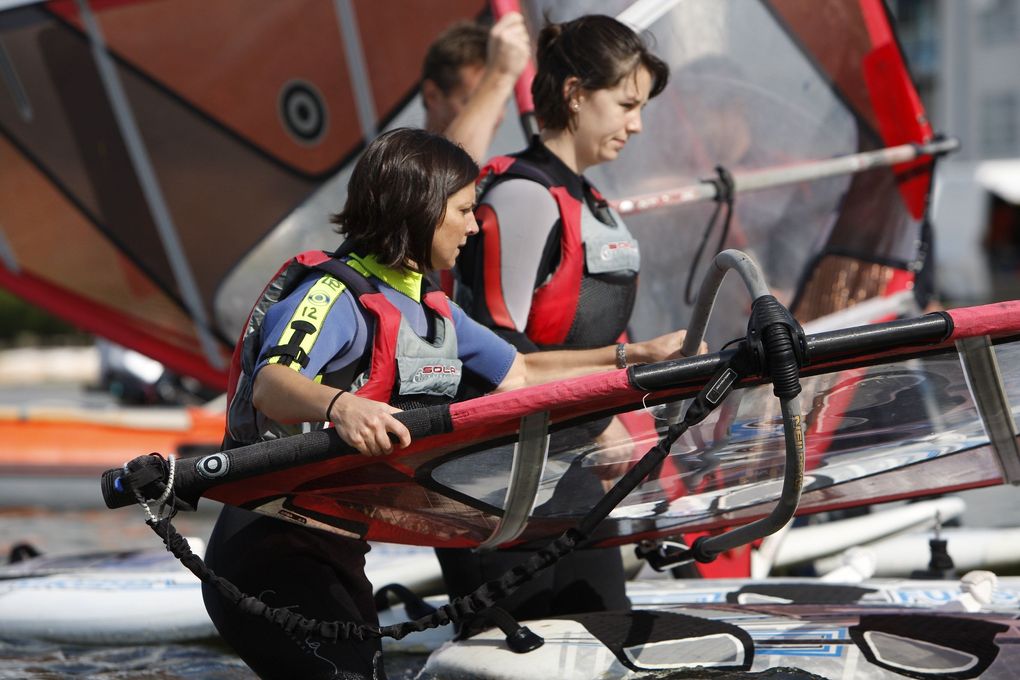
The width of a board helps with stability, and can sometimes be a better way to judge suitability than volume. Wider boards are generally more stable, able to plane earlier, carry larger fins and sails and are bouncier in chop. A narrower board is typically more suited to lighter sailors or stronger winds.
Beginner rigs tend not to have battens – the stiff, flexible rods that pass across a sail to give extra power, stability and shape – but as you progress you want a sail that is going to give you better performance. When buying your first rig look for something light but that does have battens.
The same sorts of considerations need to be made for buying kids’ kit. A young sailor needs light sails so they can pull the sail up and hold on to it. Again the board needs to be the right size; not too big they can’t turn it around, but equally not too small they can’t stand and balance on it.
The RYA Start and Intermediate Handbooks have great advice on buying kit.
 Getting geared up
Getting geared up
The advantage of learning to windsurf at an RYA Training Centre is they provide everything you need in terms of equipment and clothing. But when you start venturing out on your own, what you wear is as important as what you sail.
A decent, versatile wetsuit is a must. They come in all shapes, sizes and thickness depending on what time of year and/or conditions you’re sailing in, but they all basically work the same way, by trapping a thin layer of water between you and the suit, which is warmed by your body and acts as insulation.
You might also consider buying windsurfing boots, gloves and a rash vest as part of your personal clothing, while as you progress you will doubtless want to get a harness to suit the type of windsurfing you want to do too.
A buoyancy aid is also top of the priorities list when learning. You may feel confident and committed enough to buy your own kit, but you will still be making mistakes. A buoyancy aid will help keep your confidence high when you’re trying to master new skills, such as planing and water starts.
Being covered by at least Third Party Insurance is sensible too, in case you do have a close shave with another windsurfer or water user. This level of cover is free for windsurfing RYA members, through Bishop Skinner Marine the RYA’s recommended insurance broker, while higher levels of cover are available to buy.
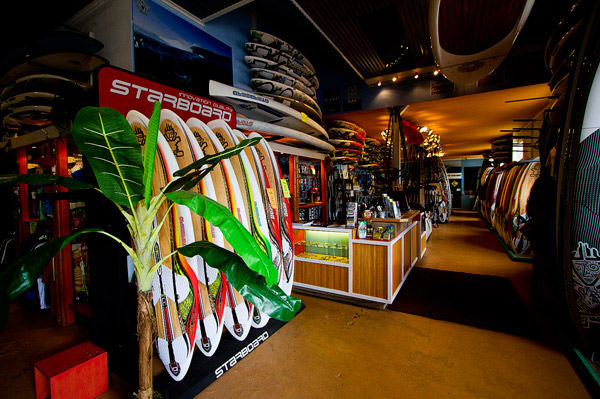
Where to go?
The variety in all kit and clothing, even at the most basic level, can be mind-blowing so getting the right advice is crucial to avoid making potentially expensive mistakes.
Your instructors will have a good idea what equipment will be most suited to you and quite often there will be a shop attached to the training centre too. Other windsurfers at the centre, or friends you’ve made through the sport, will also be able to pass on useful information. Do your own homework too; there are a number of reputable magazines and websites that run board tests and demo equipment, and check out suppliers’ websites or local retailers too for kit and price comparisons.
Like with most things nowadays there is a buoyant secondhand market as well. But Amanda insists this is a path that must be trodden carefully, adding: “Like everything you have to be careful with regards what you buy.
“There is Stone Age stuff out there, which if you are none the wiser someone will try to sell to you. Buying very old style equipment could hinder learning as kit design has come on such a long way.
“That’s where doing solid research comes in, and no-one knows windsurfing better than windsurfers so get amongst people and get the best advice you can so, for example, you don’t end up buying a board that’s too small and meant for more advanced sailors or rigs or sails that are too big or heavy due to design, age or size. Once you have your own kit, the world is your oyster, but getting the right kit is key.”
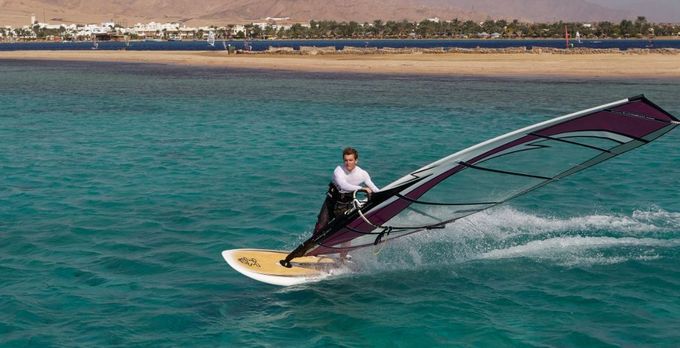
Sam Ross’ Top 5 Kit Buying Mistakes
1. Buying kit like Christmas jumpers – we often buy things we’re going to grow in to! Modern improver boards offer huge amounts of grow room and will get your skills better faster so make sure you can maximise time on the water instead of in it.
2. eBay – full beginner setup for only £400! If it looks too good to be true it probably is. eBay can be great for second-hand gear but get proper advice first. Making contact with a local windsurfing shop can also pay off when it comes to where and when to sail and if you ever need maintenance and an extra bit of downhaul rope.
3. Shiny sails v shiny masts – an bit of extra % carbon in your mast will make a world of difference to your rig, so whilst it won’t have the allure of a snazzy looking extra sail it will help you make your gains that little bit quicker.
4. ‘I’ve got an old wetsuit’ – this is the bit of kit you’re going to use every time you go out. Do it right!
5. Putting it off – get your kit and use it! If you can’t get afloat, practice rigging it up, mark your extensions and your boom, so every moment you’re down the beach you’re sailing, not trying to remember how to rig. Once you start I guarantee you will end up buying more, but you’re going to have a great time and get a lot better!

For more advice and information or to purchase RYA publications visit www.rya.org.uk
Love Windsurfing? Then why not join the association that promotes and protects, safe, successful and rewarding British windsurfing. Join today and support the RYA in protecting your rights and freedoms. Take advantage of free advice and support on a wide range of windsurfing topics; enjoy free third party insurance, as well as a fantastic range of personal member offers.
Find out more by calling 0844 556 9556, email [email protected] or visit www.rya.org.uk

